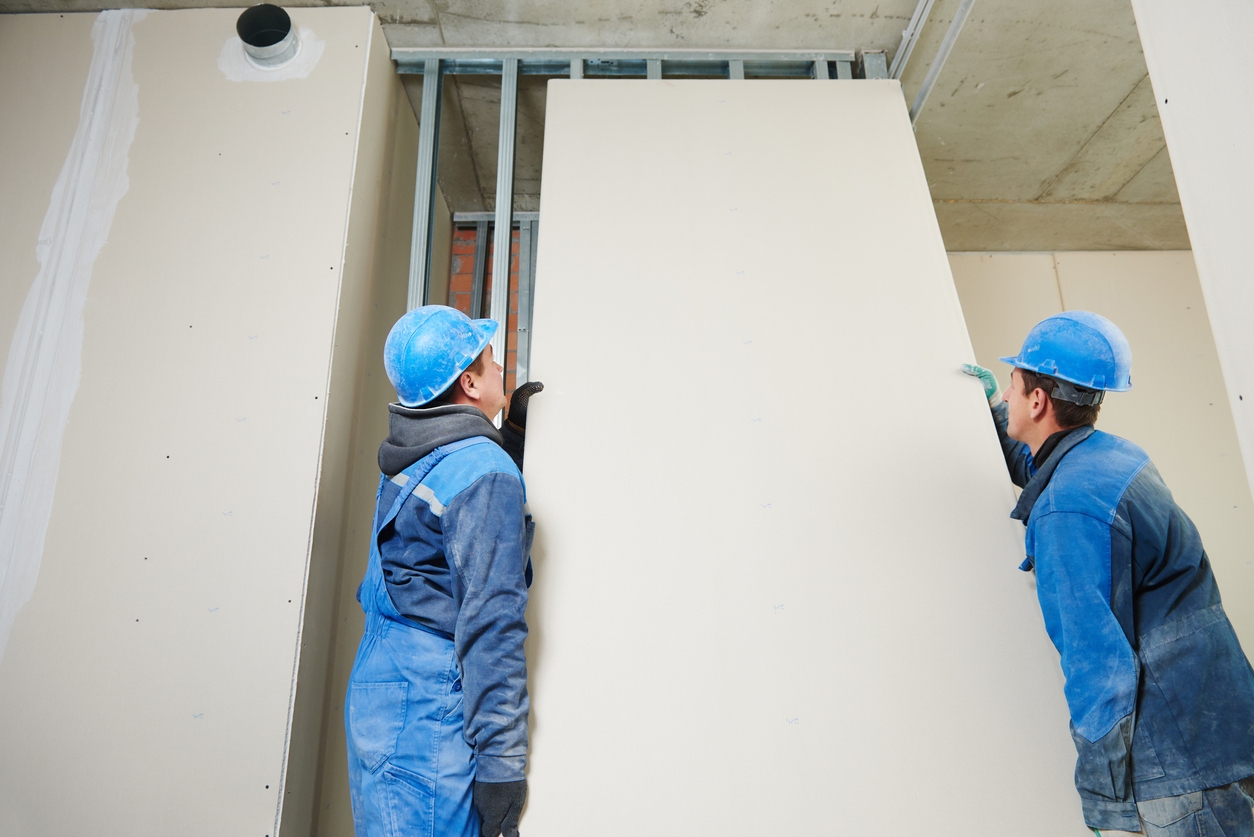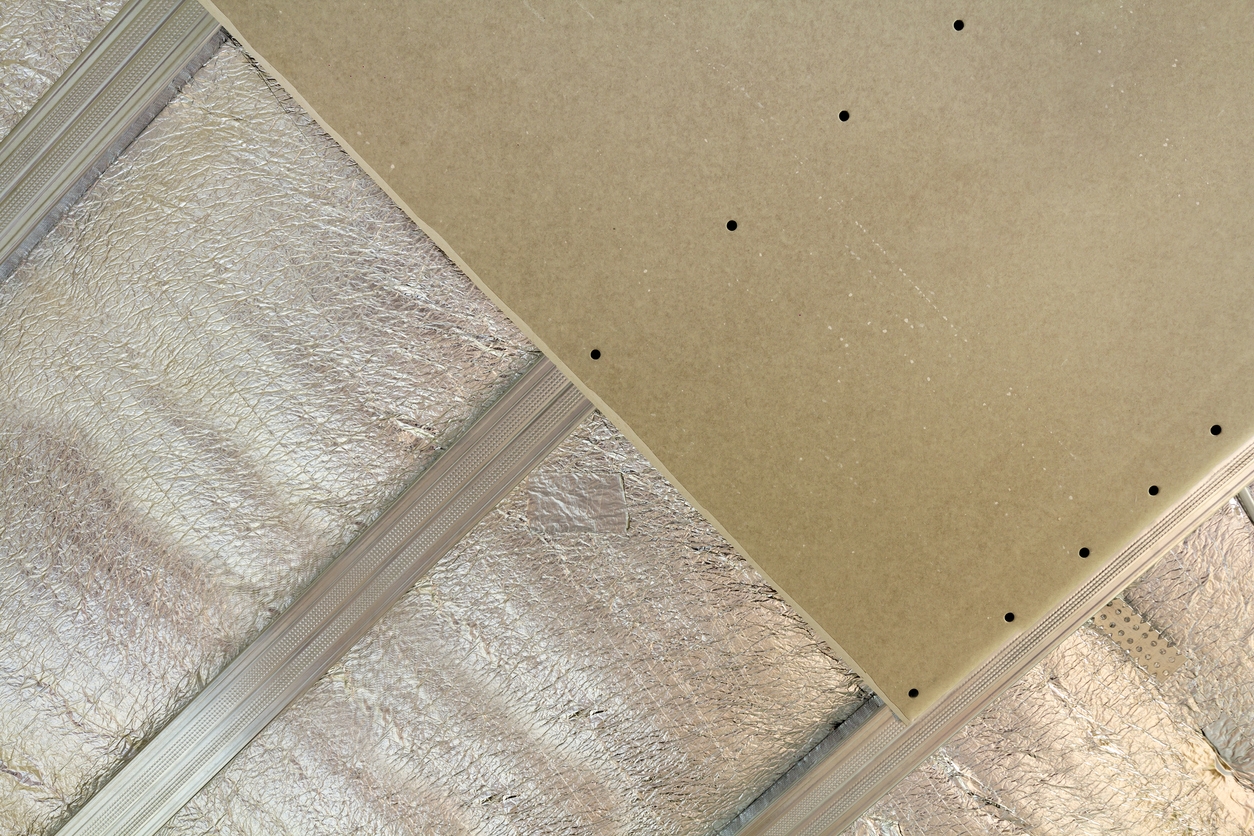Dustless drywall is a modern solution for construction and renovation projects that aims to reduce the mess and health risks associated with traditional drywall installation. By using specialized tools and techniques, dustless drywall minimizes airborne dust, making the process cleaner and safer for both workers and occupants. Let us learn what dustless drywall is, how it works, and where it’s commonly used to improve efficiency and air quality in various construction environments.
Understanding Dustless Drywall
Dustless drywall represents an innovation in construction materials, designed to minimize the mess and health hazards typically associated with traditional drywall installation. It offers a cleaner, more efficient alternative, making it an attractive option for both professionals and DIY enthusiasts.
Definition and Composition of Dustless Drywall
Dustless drywall is made from the same basic materials as traditional drywall, including gypsum, but with a focus on reducing dust during installation and sanding. This is achieved through the use of special additives and advanced manufacturing techniques that limit the amount of dust generated. The result is a product that performs similarly to regular drywall in terms of strength and durability but with a significant reduction in dust production.
How It Differs from Traditional Drywall
The primary difference between dustless drywall and traditional drywall lies in the way it handles dust. Traditional drywall, when cut or sanded, produces a fine dust that can spread throughout the work area and beyond, creating a mess and potential health risks. Dustless drywall, on the other hand, generates far less dust due to its unique composition and the tools used for installation, which are designed to capture dust as it is created.
Key Benefits:
- Reduced Dust: The most obvious advantage of dustless drywall is its ability to significantly cut down on the amount of dust generated during installation and finishing. This makes it an ideal choice for projects where cleanliness is a priority, such as in occupied homes or commercial spaces.
- Cleaner Work Environment: With less dust to contend with, the work environment remains cleaner, reducing the need for extensive cleanup and allowing other trades to work more efficiently in the same space.
- Improved Air Quality: Traditional drywall dust can linger in the air, posing respiratory risks to workers and occupants. Dustless drywall helps to improve air quality during construction, contributing to a healthier environment overall.
Dustless drywall offers a practical and health-conscious alternative to traditional drywall, providing a cleaner, safer, and more efficient solution for various construction projects.
How Dustless Drywall Works
Dustless drywall is designed to address one of the biggest challenges in drywall installation: the creation of dust. The technology behind dustless drywall focuses on minimizing dust at every stage of the process, from cutting to sanding.
Explanation of the Technology Behind Dustless Drywall
The key to dustless drywall lies in its composition and the tools used during installation. The drywall itself is made with special additives that make the material less prone to crumbling and generating dust when cut or sanded. Additionally, the use of dust-collecting tools, such as vacuum attachments and specialized sanders, ensures that any dust that is created is immediately captured rather than being released into the air.
Special Features That Minimize Dust Creation
Dustless drywall typically incorporates several features to reduce dust:
- Low-Dust Joint Compound: The joint compound used with dustless drywall is formulated to create heavier particles that fall to the ground rather than become airborne.
- Integrated Dust Collection Systems: Tools like sanders and saws designed for use with dustless drywall often come with built-in vacuum systems that capture dust directly at the source.
- Improved Binding Agents: The drywall itself is manufactured with binders that help hold the gypsum together more firmly, reducing the amount of dust generated during cutting and finishing.
Comparison with Traditional Drywall Installation and Finishing
In traditional drywall installation, cutting and sanding can release significant amounts of fine dust into the air, which then settles on surfaces throughout the work area. This not only creates a mess but also poses health risks, especially for those with respiratory issues. In contrast, dustless drywall drastically reduces this dust, leading to a much cleaner job site. The need for extensive cleanup is reduced, and air quality is better maintained, making it easier to work in an occupied space or one that requires a quick turnaround.
Overall, dustless drywall offers a more efficient and safer alternative to traditional drywall, improving both the installation process and the environment in which it is used.
Applications of Dustless Drywall
Dustless drywall is versatile and can be used in a variety of settings where cleanliness and air quality are of paramount importance. Its ability to reduce dust makes it especially beneficial in environments where traditional drywall might pose challenges.
Residential Use: Benefits for Home Renovations and New Builds
In residential settings, dustless drywall is particularly valuable during renovations and new construction. Homeowners often worry about the mess and potential health risks associated with drywall dust, especially in occupied homes. Dustless drywall helps mitigate these concerns by keeping the workspace cleaner and reducing the spread of dust throughout the home. This not only speeds up the project by minimizing the need for extensive cleanup but also enhances the overall living environment, making it more comfortable for residents during construction.
Commercial Use: Advantages in Office Buildings, Schools, and Hospitals
In commercial settings such as office buildings, schools, and hospitals, maintaining a clean environment is crucial. Dustless drywall is ideal for these spaces because it minimizes disruption to daily activities. In office buildings, for example, renovations can occur without significantly impacting the work environment, allowing employees to continue their tasks with minimal disturbance. In schools and hospitals, where air quality is a top priority, dustless drywall helps protect vulnerable populations, such as children and patients, from exposure to harmful dust particles.
Specialized Environments: Importance in Cleanrooms and Sensitive Areas
For specialized environments like cleanrooms and laboratories, where even the smallest amount of dust can compromise the integrity of the work being done, dustless drywall is essential. These environments require strict control over air quality and cleanliness, and dustless drywall ensures that these standards are maintained during construction or renovation. The reduced dust production helps maintain the sterile conditions needed in these sensitive areas, preventing contamination and ensuring that the work can proceed without interruptions.
Dustless drywall offers significant advantages across various applications, from residential projects to commercial buildings and specialized environments. Its ability to reduce dust makes it a practical and health-conscious choice for any setting where cleanliness and air quality are important.
Benefits of Using Dustless Drywall
Dustless drywall offers several significant advantages that make it an appealing choice for various construction and renovation projects. Here are the key benefits:
- Reduced Dust Generation: The primary benefit of dustless drywall is its ability to drastically reduce the amount of dust created during installation and finishing. This reduction in dust helps keep the work area cleaner and minimizes the spread of dust to other parts of the building.
- Cleaner Work Environment: A cleaner work environment not only improves the overall aesthetics of the job site but also enhances safety for workers. With less dust in the air and on surfaces, there is less need for extensive cleanup, which can save time and resources.
- Improved Air Quality: Traditional drywall dust can linger in the air, posing health risks, particularly for those with respiratory issues. Dustless drywall helps to maintain better air quality, making it safer for both workers and occupants, especially in sensitive environments like schools, hospitals, and homes.
- Increased Efficiency: The reduced need for cleanup allows for faster project completion, as workers can focus more on the construction tasks rather than dealing with dust. This efficiency can lead to cost savings, as less time and labor are required to achieve a clean finish.
- Ideal for Occupied Spaces: Dustless drywall is particularly beneficial in environments that are occupied during construction, such as homes, offices, and commercial buildings. It minimizes disruption to daily activities by keeping dust levels low, making it easier to continue normal operations during renovation or construction.
- Health and Safety: By reducing dust, dustless drywall lowers the risk of respiratory issues for workers and building occupants. It also contributes to a safer working environment, reducing the likelihood of accidents related to poor visibility or slippery surfaces caused by dust accumulation.
Overall, dustless drywall provides a cleaner, safer, and more efficient alternative to traditional drywall, making it a valuable choice for a wide range of construction and renovation projects.
Cost Considerations and Availability
When considering dustless drywall for a project, it’s important to weigh the initial costs against the long-term benefits. While dustless drywall may come with a slightly higher price tag compared to traditional drywall, the advantages it offers can lead to significant savings over time.
Comparison of Costs with Traditional Drywall
- Initial Cost: Dustless drywall typically costs more upfront than traditional drywall. This is due to the specialized manufacturing processes and materials used to minimize dust production.
- Installation Costs: The tools and equipment required for dustless drywall installation, such as vacuum attachments and low-dust joint compounds, can also contribute to higher initial expenses.
Long-Term Savings
- Reduced Cleanup Costs: One of the most immediate savings comes from the reduced need for extensive cleanup. With less dust generated, workers spend less time cleaning the work area, which can lower labor costs and shorten project timelines.
- Health Benefits: By improving air quality and reducing dust exposure, dustless drywall can contribute to long-term health benefits for workers and building occupants. This can result in fewer health-related issues, potentially lowering healthcare costs and reducing absenteeism in workplaces.
- Fewer Disruptions: In environments like schools, hospitals, or occupied homes, minimizing dust can reduce disruptions, allowing normal activities to continue with minimal interference. This can be particularly valuable in commercial settings where downtime can be costly.
Availability
- Market Presence: Dustless drywall is becoming increasingly popular, and its availability is growing in many regions. Most major building supply stores now carry dustless drywall products, and it can be easily sourced for both small and large projects.
- Specialized Products: In addition to standard dustless drywall, there are specialized products designed for specific applications, such as moisture-resistant or fire-resistant dustless drywall, providing options for a variety of needs.
While dustless drywall may involve higher initial costs, the long-term savings from reduced cleanup, improved health, and minimized disruptions make it a cost-effective choice for many construction and renovation projects. Its growing availability ensures that it is an accessible option for those looking to benefit from its advantages.
Final Thoughts
Dustless drywall offers a cleaner, safer, and more efficient solution for your construction and renovation needs. Whether you’re working on a residential project, a commercial building, or a specialized environment, the benefits of reduced dust and improved air quality make it a smart choice. If you’re interested in learning more or need professional drywall services, contact Custom Painting, Inc. at 925-294-8062 or fill out our contact form to get started.




